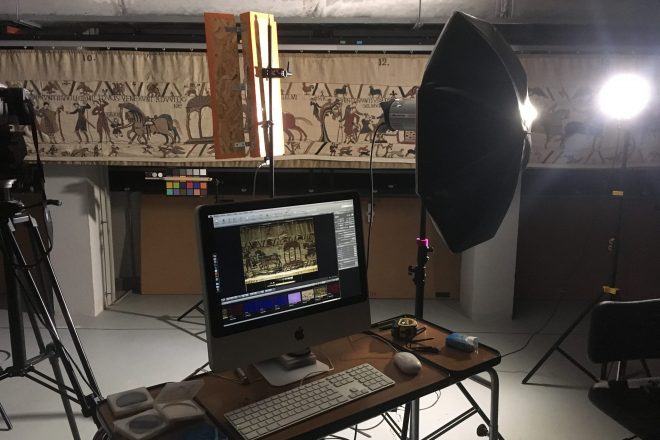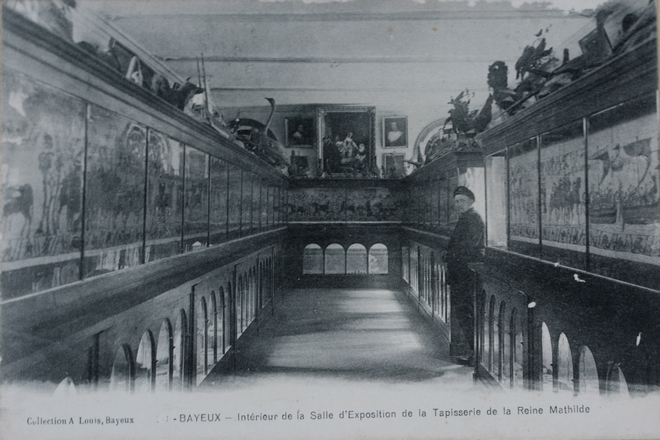
Share
The digital project has come to fruition through development of the “SIDS” tool, the Spatialised Documentary Information System, which is designed to be the tool used for scientific research relating to the Bayeux Tapestry and which will then be adapted for the public at the future museum.
The tool was created with close collaboration between the City of Bayeux, the French State, the University of Caen and the CNRS, through the efforts of several laboratories and research teams: the CERTIC (Technological Resources Centre/DSI/UNICAEN), the Digital Document Centre (MRSH/UNICAEN), the GREYC information technology research centre (UNICAEN/ENSICAEN) and historians from the CRAHAM (UNICAEN). The work was cross-disciplinary, bringing together documentary experts, specialist engineers, image processing specialists and medieval historians sharing the common aim of designing an innovative research tool.

A photographic campaign carried out by the Fabrique de patrimoines en Normandie in 2017 made it possible to build the first ever high definition panorama of the Bayeux Tapestry, thanks to a dedicated image processing algorithm designed by the University of Caen. Together with images obtained from different spectra plus the only photographic record of the reverse side of the work, carried out in 1983 (General Cultural Heritage Inventory, Caen/French State), the panorama allows the entire work to be visualised in detail.
[Campagne 2017, La Fabrique de patrimoines en Normandie / A. Cazin & G. Debout / CC by-nc-sa, janvier 2017.

The “SIDS” will be the entry point for access to all documentation relevant to scientific study of the Bayeux Tapestry, some of which has never been published: study reports, photographic campaigns, graphic views and so on. This varied body of documentary materials is spatially referenced on the digital reproduction of the work in order to assist experts in their research, no matter which details are being studied or in what discipline.
[Collection A. Louis Bayeux – SABL – Exhibition of the Bayeux Tapestry in Mathilda Gallery – 19th Century ]
Based on this documentation and the tools associated with it, experts will be aided by a system of annotation that will allow them to create their own layers of data, which in turn will serve to enrich the tool. The whole international scientific and multidisciplinary community interested in the Bayeux Tapestry will thus be contributing to the “SIDS” over a long period of time: historians, art historians, Latinists, curators-restorers, documentalists and others. Apart from these specific environments devoted to research and the physical knowledge of the work, the City of Bayeux plans to make adapted versions of the tool available for French and British schools and visitors to the future museum, so that the results of ongoing research are as accessible as possible to the widest audience.